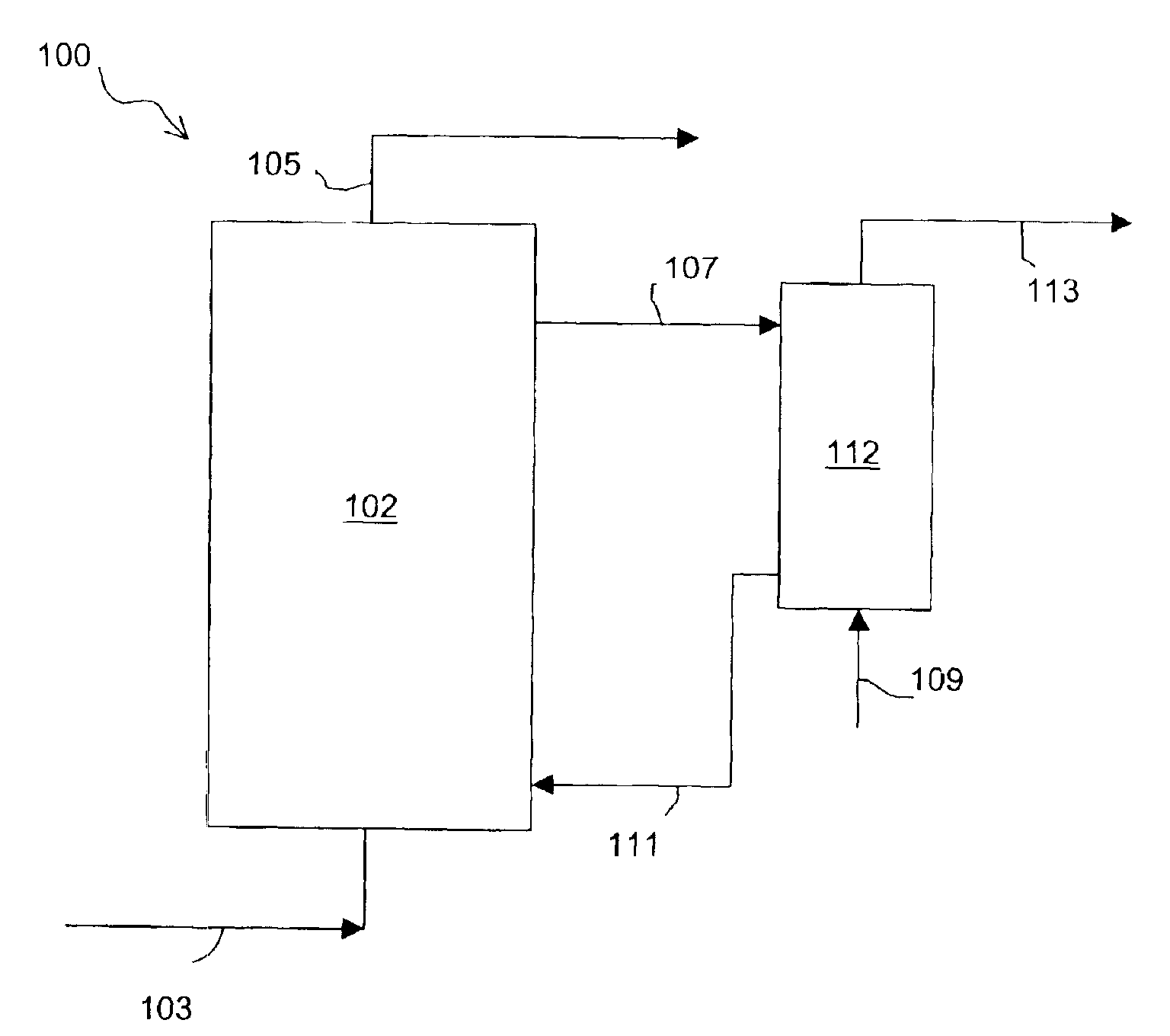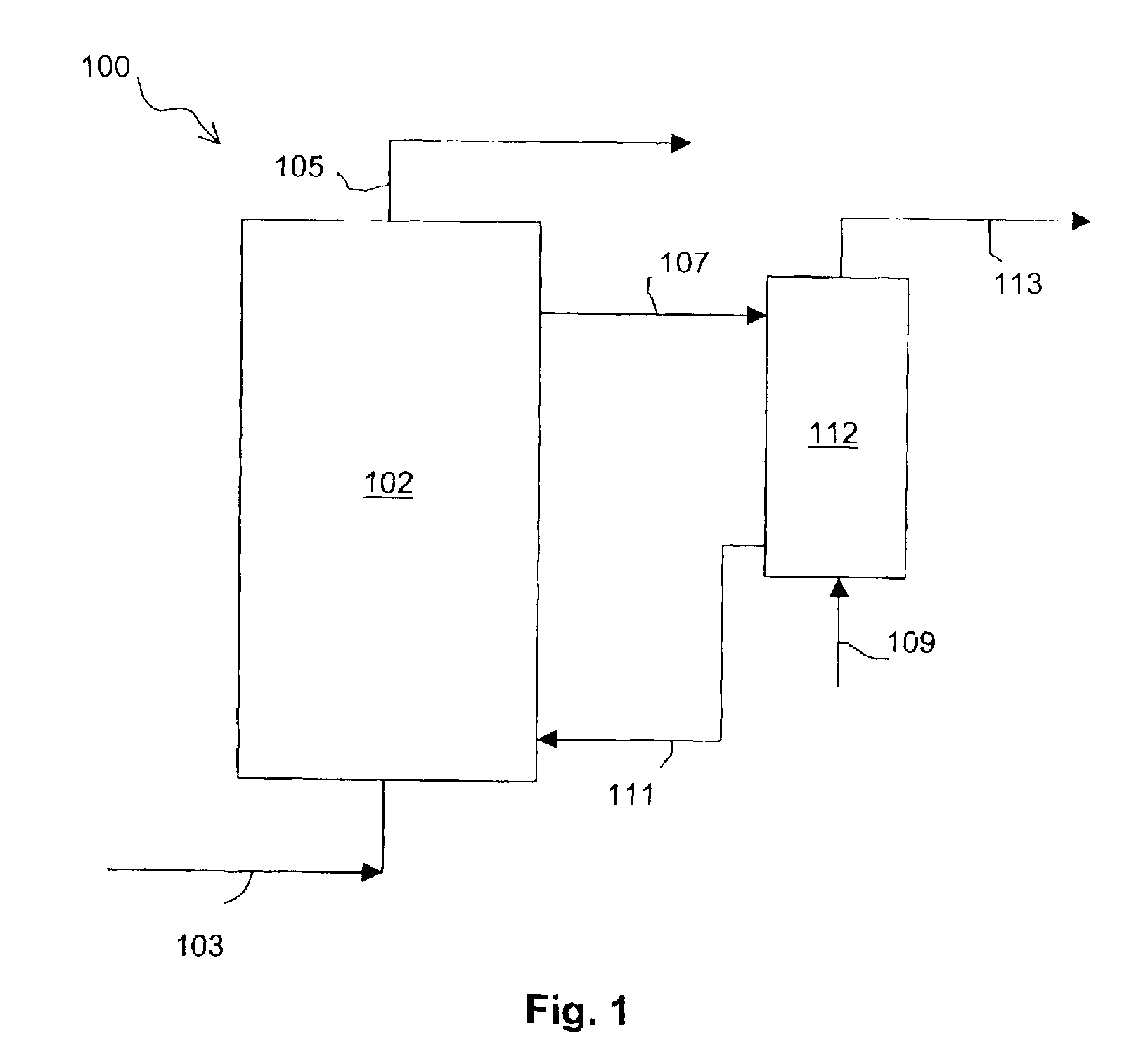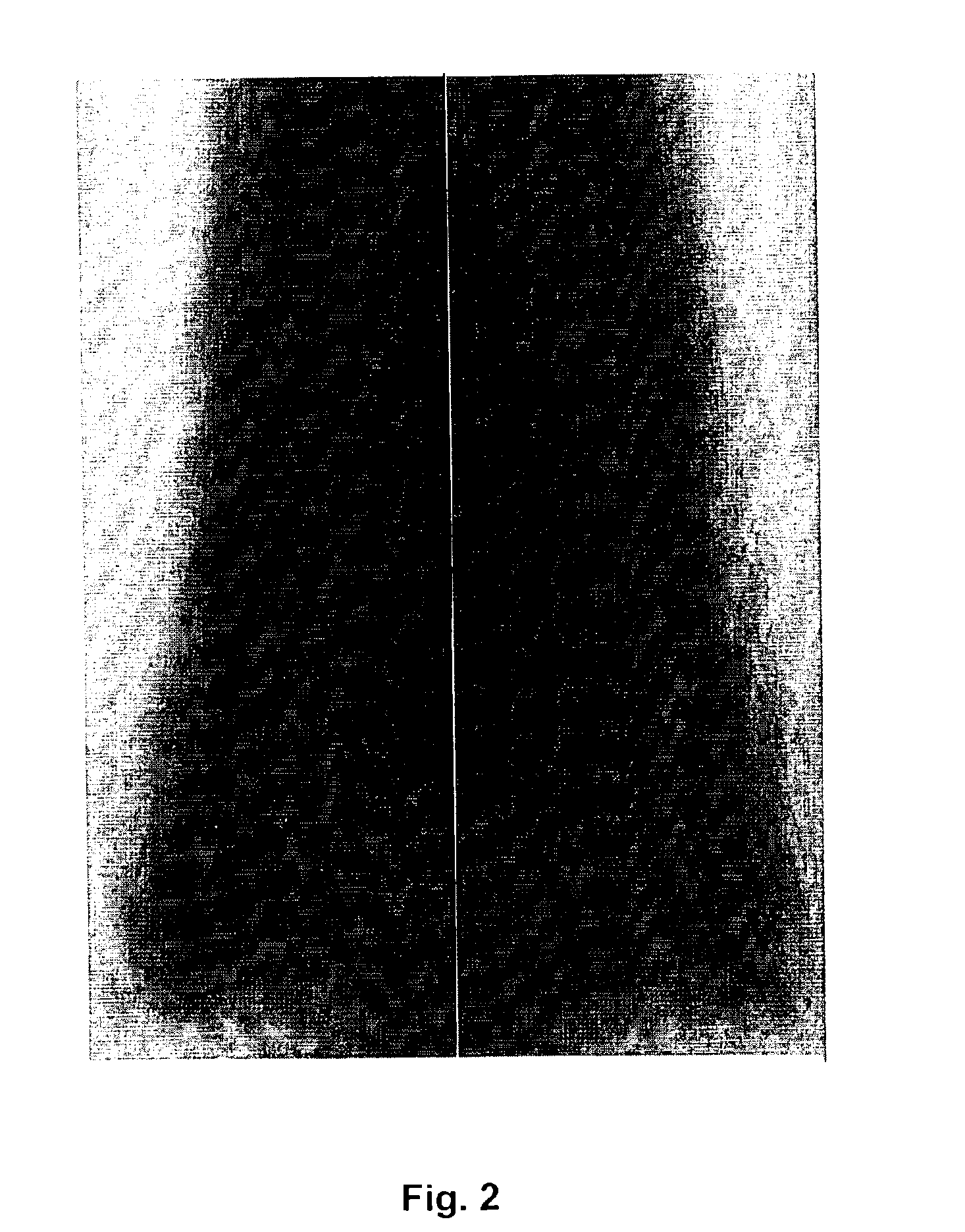Method for reducing water concentration in a multi-phase column reactor
a multi-phase column reactor and water concentration technology, applied in chemical/physical processes, oxygen compound purification/separation, centrifugal force sediment separation, etc., can solve the problems of continuous formation of water, difficulty in temperature control, and unattractive economic use, and achieve the effect of higher per-pass conversion
- Summary
- Abstract
- Description
- Claims
- Application Information
AI Technical Summary
Benefits of technology
Problems solved by technology
Method used
Image
Examples
Embodiment Construction
[0023]According to the present invention, a water removal means may be employed to extract certain components, including water, from a multi-phase column reactor operating at Fischer-Tropsch conditions. In typical Fischer-Tropsch processes, water begins to accumulate in the operating reactor, forming a water-rich slurry. As mentioned above, this is undesirable because water has a negative effect on the catalyst deactivation rate and inhibits the rate of reaction. To minimize this problem, in a preferred embodiment of the invention a portion of the water-rich slurry is removed from a predetermined region within the reactor and then passed through a water removal means to form a water-reduced slurry. The water-reduced slurry is then preferably returned to the reactor. Thus, the concentration of water is reduced both in the slurry and in the reactor.
[0024]Referring initially to FIG. 1, a multi-phase reactor system 100 in accordance with the present invention comprises a multi-phase rea...
PUM
| Property | Measurement | Unit |
|---|---|---|
| pressure | aaaaa | aaaaa |
| temperatures | aaaaa | aaaaa |
| temperatures | aaaaa | aaaaa |
Abstract
Description
Claims
Application Information
 Login to View More
Login to View More - R&D
- Intellectual Property
- Life Sciences
- Materials
- Tech Scout
- Unparalleled Data Quality
- Higher Quality Content
- 60% Fewer Hallucinations
Browse by: Latest US Patents, China's latest patents, Technical Efficacy Thesaurus, Application Domain, Technology Topic, Popular Technical Reports.
© 2025 PatSnap. All rights reserved.Legal|Privacy policy|Modern Slavery Act Transparency Statement|Sitemap|About US| Contact US: help@patsnap.com



